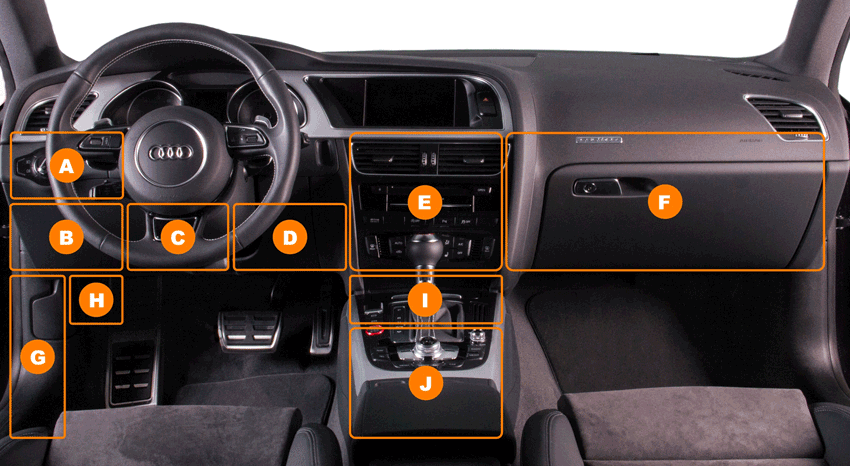- You do not have any products in your shopping cart yet.





Function
"OBD" stands for "On-Board Diagnostics," the standardized diagnostic interface for motor vehicles. The OBD killer is a compact electronic module that is simply plugged into this diagnostic interface. There, it monitors the engine control unit's error memory in real time for possible entries. If an impending error is detected in the memory, the OBD killer blocks it before the driver sees a message in the cockpit. Expected, sporadically occurring error codes can be isolated. If an unexpected error occurs, the deletion process stops. This preserves the functionality of the error memory.
Error codes
The OKS.ALL is self-learning and can generally block all exhaust-related error codes. During installation, the OBD killer learns the entered codes as expected errors. This process can be repeated as often as desired to add further error codes. Manufacturer-specific codes that do not comply with the OBD standard are also deleted. As soon as an unexpected error occurs, the OBD killer no longer intervenes. This means that the full functionality of the error memory and engine warning light is retained for all other error messages.
Application
You can use the OBD Killer on vehicles from model year 2008 onwards that comply with the European EOBD standard or implement it accordingly. There are also vehicles that already support the necessary standard in previous years. You can recognize these vehicles by the fact that pins 6 and 14 are occupied on the diagnostic connector. It does not matter whether the engine runs on diesel, gasoline, natural gas, or LPG. Some engine control units do not support the deletion of error codes while driving using the OBD protocol. The OBD Killer is not suitable for these vehicles. Please check this before placing your order.
Installation
The OBD killer is simply plugged into the vehicle's OBD socket.
Vehicle change
When changing vehicles, you can continue to use the OBD killer for vehicles built in 2008 or later without any problems. If the OBD killer detects a new chassis number after installation, all learning values are reset. The OBD killer is then virtually brand new.
Installation instructions
The OBD diagnostic port is located within one metre of the steering wheel. The list on the reverse side shows the possible locations of the diagnostic socket for your vehicle manufacturer. To install, simply plug the OBD killer into the diagnostic socket.
Important: during initial installation, the expected error codes must be active and the engine warning light must be on.
The device starts within 60 seconds of the engine starting or after driving off. The yellow LEDs flash depending on the engine speed and signal communication with the engine control unit. On some vehicles, it is advisable to use our extremely flat extension cable.
When the engine is started for the first time, the OBD killer stores all currently entered error codes in its internal memory. This process can be repeated by briefly disconnecting and reconnecting the OBD killer to store further error codes in the OBD killer's memory.
If the red LED lights up briefly, an expected error code has been deleted. If the red LED flashes continuously, the engine control unit refuses to delete the code in its current operating state. The deletion is repeated until the engine control unit confirms successful deletion. In a few cases, the engine control unit constantly refuses to delete. This is either a permanent error or the vehicle's engine control unit does not support deletion while the engine is running.
After the engine is switched off, the green LED flashes every 5 seconds and the OBD killer checks whether the engine has been restarted.

A: Audi, Jaguar
B: Alfa Romeo, Citroën, Dacia, Fiat, Ford, Honda, Hyundai, Infiniti, Kia, Lancia, Land Rover, Mazda, Nissan, Opel, Peugeot, Seat, Skoda, Toyota
C: Chevrolet, Jaguar, Subaru
D: Citroën, Honda, Mitsubishi, Toyota
E: Lada, Opel, Peugeot, Renault, Seat, VW
F: Dacia, Renault
G: BMW, Lada
H: Audi, BMW, Chevrolet, Chrysler, Kia, Mercedes, Mini, Renault, Seat, Skoda, Subaru, Suzuki, VW, Volvo
I: Lada, Opel, Peugeot, Renault, Seat
J: Opel, Renault
Vehicle change
When changing vehicles, the OBD killer recognises the new chassis number and resets all learning values. The device then corresponds to the delivery condition.
Customer reviews
Unfortunately there are no reviews yet. Be the first who rates this product.
You must be logged in to submit a review. Login


